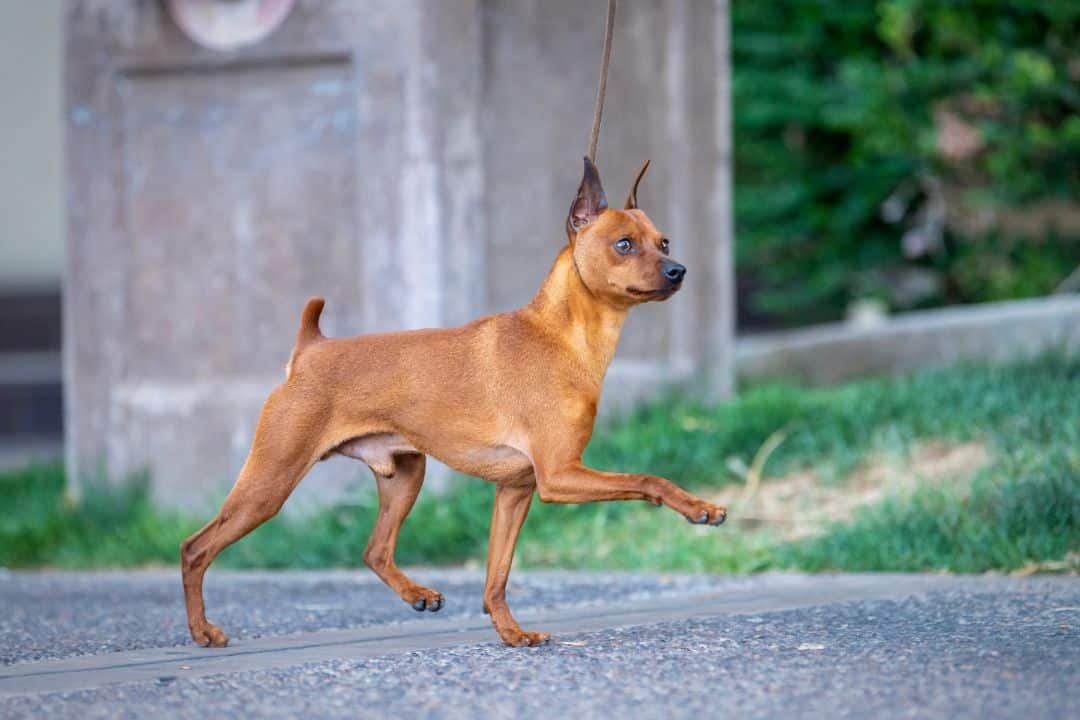
Home » The Min Pin | A Beautiful Picture of a Profile Breed in Motion

The Miniature Pinscher is a profile breed. In my opinion this, means they should be judged with the most emphasis put on the picture you see when they are moving. How do they look going around the ring? How do they use themselves? From this view, you can easily assess overall balance. Do they move with smoothness and effortless coordination? It’s a pretty picture when you see this combination—it really catches your eye.
The Min Pin is called the King of Toys; they show that they know it by their active and spirited demeanor. Anything less than this attitude of dynamic self-possession should not be rewarded. The Min Pin must always stand (though standing still is not really in the vocabulary), move freely with defined lift and wrist bend, and bait with head held high. They have the regal presence of a king.
As a judge, he or she individually examines each dog on the table, most notably checking bite, and testicles, and perhaps, feel for smoothness of shoulders. It is inappropriate for judges to run their hands all over this small, smooth-coated breed. The judge can see the Min Pin’s expression, head, eye color, neck length, and length of leg, together with seeing the rear angles, depth of thigh, flat croup, and tail set—without ever touching the dog. One can see overall balance and quality.
A beautiful Min Pin has a well-angulated stifle, together with a well-angulated rear end. This proper structure will be seen in the profile movement. Of course, soundness on the down and back must be given adequate consideration. The topline should be level or slightly sloping while standing and moving.
The Min Pin, according to the standard, does not have equal angles in the front and rear. The standard calls for a moderately angled shoulder and a well-angulated rear. It is my opinion that these differing front and rear angles allow for movement with a lot of lift, reach, bend of wrist in the front, and strong drive in the rear. So much of the correct movement is determined by foot timing. (And in the Min Pin’s case, there is a strong genetic component.) By virtue of this high lift in front, the strong driving rear has time to move forward without overtaking the front legs in a relatively short-bodied square dog. The front has a lot of reach with no up-and-down hackney-like movement (which goes nowhere) and the rear covers ground without piston-like up-and-down movement (also going nowhere). For a balanced Min Pin, therefore, it would call for a high-reaching, wrist-bending front movement, together with a strong driving rear, to propel the body forward—this is the beautiful picture.
The Min Pin| A Beautiful Picture of a Profile Breed in Motion – photos courtesy of Godogphotos.
